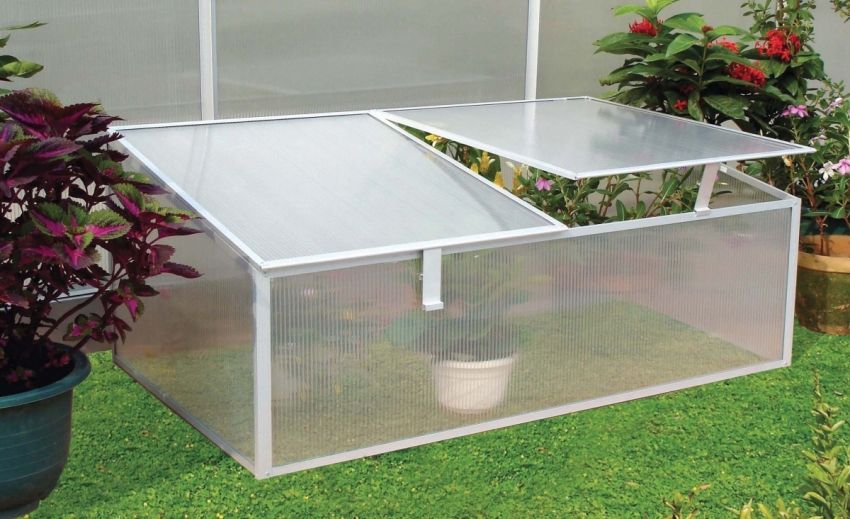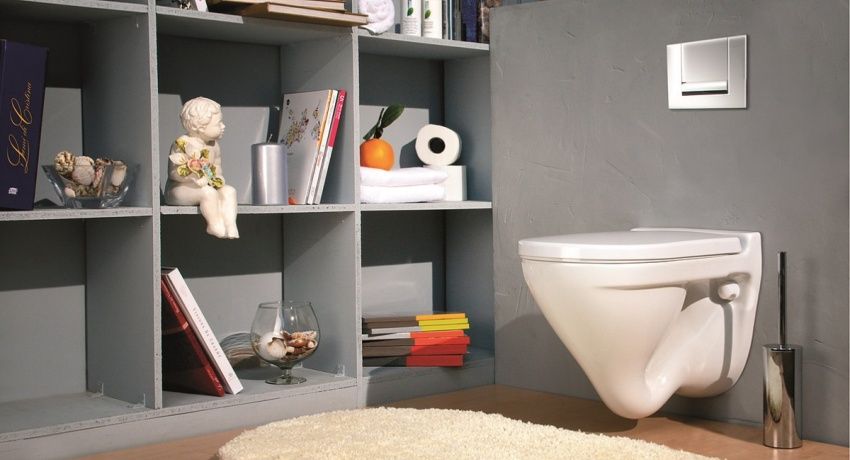Self-grown vegetables can bring much more value than those that were bought in the store. That is why many owners of suburban areas are seeking to acquire a greenhouse, which will be the ideal living environment for most of the crops growing in our region. Consider how to choose a greenhouse from polycarbonate: the size and price of structures, as well as the types and features of each type.
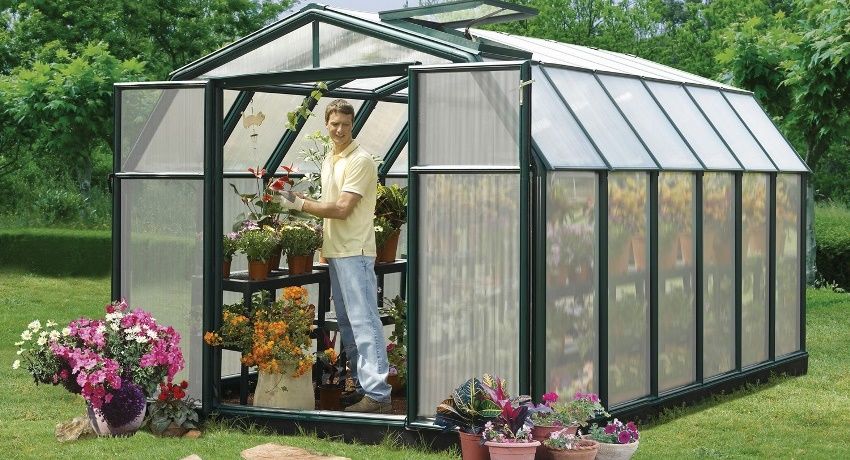
Materials for creating a polycarbonate greenhouse frame
Ready greenhouses, which can be found on sale today, are agricultural buildings, the purpose of which is to protect the plants that are located in it from adverse environmental conditions. Despite the apparent simplicity of such structures, their production is governed by the requirements and standards that are formulated in GOST R 34257 – 2010, SNiP 2.10.0485 and SP 107.13330201. Therefore, before buying everyone can familiarize themselves with the detailed conditions and requirements that apply to greenhouses.
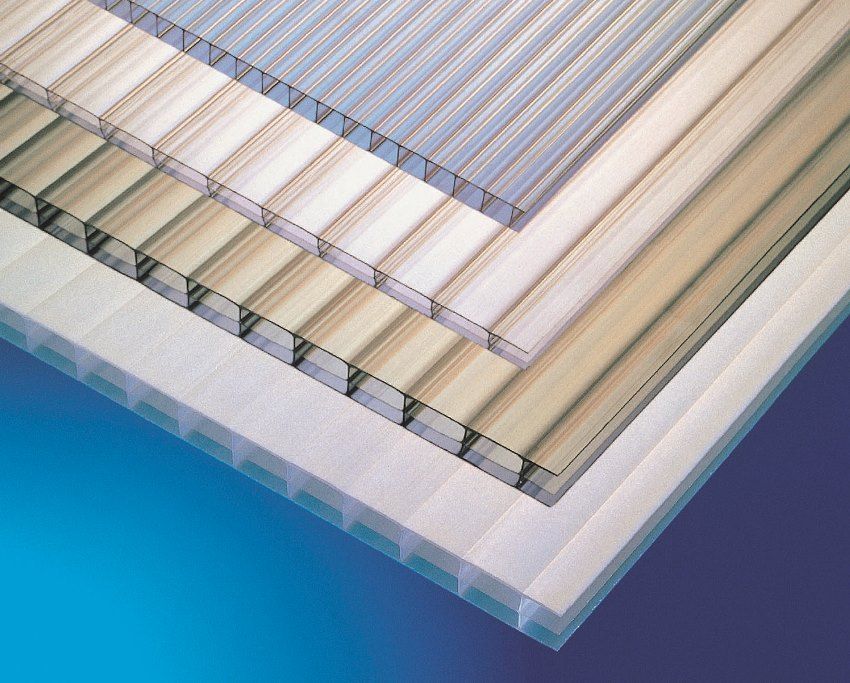
Greenhouses consist of two components: the supporting frame and polycarbonate, which this frame is covered. In this case, as the basis, various materials can be used, for example, steel pipes (both rectangular and square) or a thin-walled galvanized profile. Each of these options has its advantages and disadvantages that must be considered when choosing.
The advantages of using as a base for a greenhouse of a polycarbonate curved profile can be attributed to its low cost and low weight. But at the same time, the strength of this material is not too high, which often leads to the fact that more elements are required to create a fairly strong base.
In addition, in the production process necessarily resort to additional strengthening of the joints, because the connections are quite many and not too thick metal (0.5-0.8 mm) can be deformed under the influence of strong winds or other loads.

The steel profile is able to withstand much more serious loads and is highly durable. Virtually no natural mechanical loads can affect it, which makes this option more durable. But there is a significant drawback – the tendency of the material to corrosion and the need for permanent protection against rust.
The price of a greenhouse made of polycarbonate, the frame of which is made of steel profiles, is much higher, due to the complex manufacturing technology. First of all, because the arcs in this case are either integral or consist of only a few separate elements. Of course, both options are worthy of attention, however, your financial capabilities will play a decisive role in this matter.
Helpful advice! As a rule, all serious manufacturers have skeleton patterns. So before you buy, you should carefully read a few options, comparing the material on quality, strength and other characteristics.
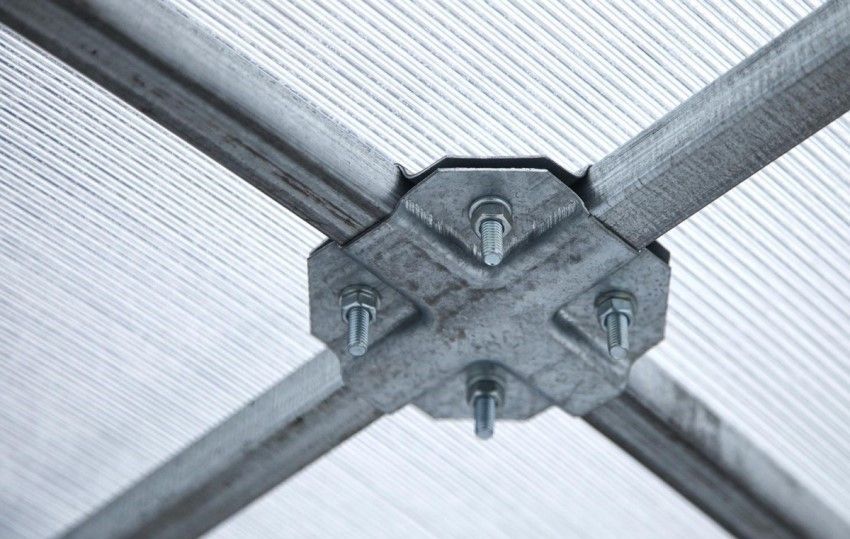
In order not to make a mistake in the choice, it is necessary to clearly understand what the frame of the greenhouse should be and what you should pay attention to. Here are some simple recommendations, guided by which you can make the right choice:
- The smaller the number of elements makes an arc, the more durable the frame will be in the end. The ideal option is solid arc.
- The metal profile of rectangular cross section has a higher resistance to stress. It is best of all if a 20X40 mm profile was used for the frame, since a cross section of 20X20 mm is far from always sufficient, especially when it comes to the foundation of a greenhouse.
- In order to be sure that the greenhouse will last for a long time, it is necessary to make sure that the thickness of the metal used to make the frame is at least 1.2 mm.
In addition to the basic ability to provide plants with comfortable conditions, for some models, lighting, irrigation and ventilation systems can be additionally installed. If you want to save yourself from unnecessary trouble, it is recommended to consider options that initially provide such opportunities.
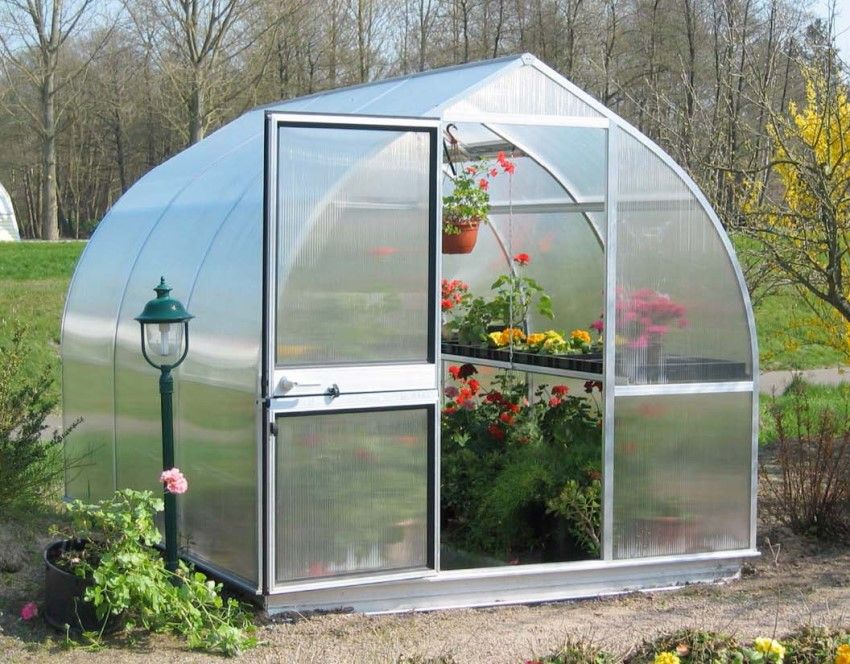
No less interest is worthy of the polycarbonate itself, which is used for the manufacture of greenhouses. In the selection process, you need to pay attention to several fundamental aspects, namely: the type of material, its thickness and the presence of a stabilizing layer. It will also be useful to read the reviews, which greenhouse is better to buy. Consider each of these three points in detail.
There are two types of polycarbonate: monolithic and cellular. The second option is more suitable for covering greenhouses, as well as various roofing work, as it exceeds the monolithic in many characteristics.
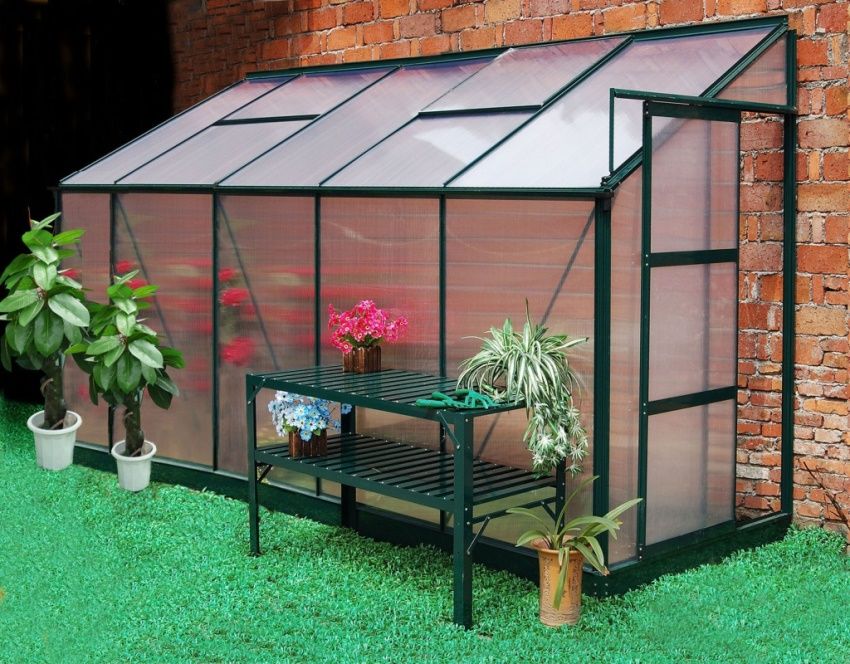
Cellular polycarbonate is a sheet material that belongs to a group of thermoplastics consisting of several layers. Internal bridges are located between these layers, which provide additional strength and have a positive effect on the duration of the operational period and the technical characteristics of the structure as a whole. So, thanks to this technology, cellular polycarbonate has the following advantages:
- low weight;
- high resistance to changes in ambient temperature;
- excellent transparency;
- flexibility;
- strength and resistance to a variety of loads.
The thickness of the polycarbonate chosen for the greenhouse plating will not only curl its strength, but also its ability to transmit sunlight and the level of thermal conductivity. As a rule, sheets from 4 to 10 mm are considered to be the most suitable for this purpose, since they meet all the basic requirements and standards.
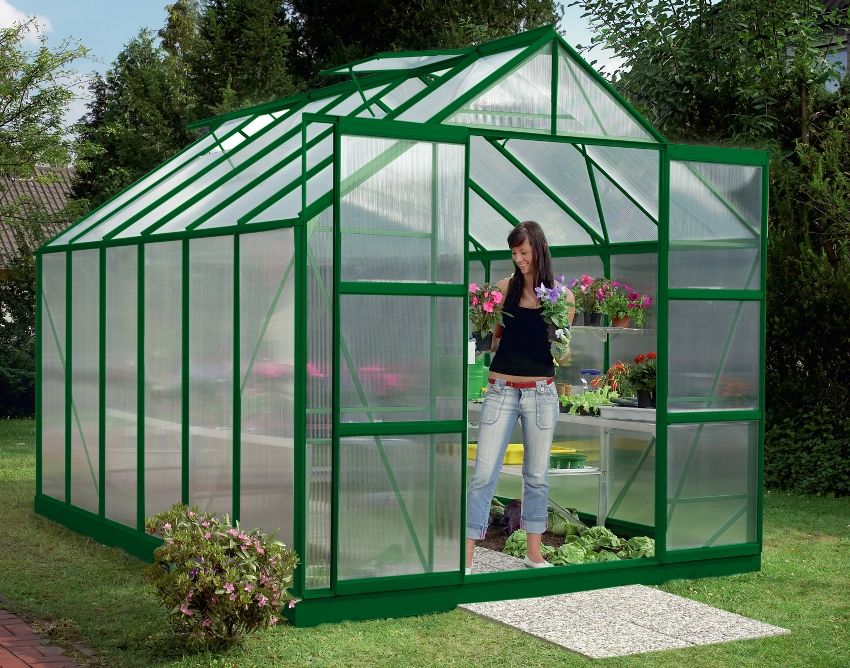
Of course, there is a direct connection between the thickness of the polycarbonate sheet and some features of the framework to which they are attached. The denser the materials used, the better the greenhouse will withstand wind and snow loads. In some cases, even the use of sheets of different thickness in one design is permissible.
Since flat and arched roofs are subjected to the greatest load, thicker polycarbonate is used for their construction, while a thinner material is suitable for vertical side walls. As a standard parameter, the panel thickness was set at 4-6 mm.
Helpful advice! Before you buy a mini-greenhouse or a full-fledged greenhouse made of polycarbonate, you must make sure that the thickness of the material declared by the manufacturer corresponds to reality. For this purpose, you can use a caliper.
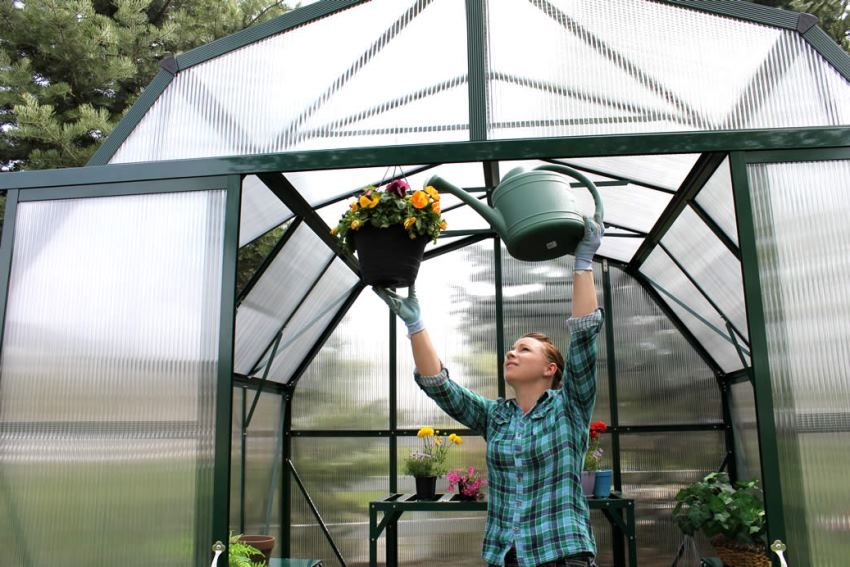
If you find that the actual thickness of the polycarbonate is different from what the manufacturer indicates, it is best to refuse to purchase. It is strictly not recommended to purchase a greenhouse for which material was used 3.5-3.7 mm thick. Unscrupulous sellers can claim that its density is higher, and therefore it can easily replace the recommended 4 mm polycarbonate. In fact, this is not the case and, most likely, it will greatly affect the service life of the structure, and its resistance to various factors.
Another way to identify cheap and low-quality material is to try to bend it with your fingers. Easily bending material, which often has no indication of which side the stabilizing layer is located, is a fake that definitely will not last for more than 2 years.
Helpful advice! The information provided on thematic forums and websites can help you find the best option. Often, users share their own experiences and advise where to buy polycarbonate greenhouses at an affordable price.

The approximate cost of a single sheet of domestically produced greenhouse polycarbonate 4 mm thick, 2.1 m wide and 6 m long is 2 thousand rubles.
High-quality polycarbonate is characterized by stunning light-stabilizing properties and the ability to completely absorb ultraviolet radiation, the wavelength of which does not exceed 400 nm. It is thanks to this ability that the greenhouse effect is achieved, which has a beneficial effect on the growth of plants.

In order to protect the material from the destructive effects of ultraviolet radiation, a special stabilizing layer is applied to one of its sides using an extrusion method. You can make sure that this layer is on the surface by following the instructions of the manufacturer who glues the label with the appropriate information over the protective film.
Helpful advice! Having seen polycarbonate on sale, on which there are no marks about the presence of a light-stabilizing layer, you need to understand that this material can only be used indoors and it is not suitable for greenhouses.

If polycarbonate without a protective layer is used to cover the greenhouse frame, this will cause the coating to fail extremely quickly. And while trying to sell low-quality products, manufacturers and sellers may argue that protection is already inside the material, in fact this is not enough. So when it comes to greenhouses, the presence of a light-stabilizing layer can be considered a prerequisite.
Looking through the prices of greenhouses and greenhouses made of polycarbonate, you can see that their cost depends not only on the technical characteristics of the materials that were used for their manufacture, but also on the features of the structure itself. In addition, the size of the greenhouse plays a significant role. Consider a few basic types that are most commonly found on sale.
Arched greenhouse – the most common version of the design, which is a structure with a semicircular overlap. The advantages of this option can be attributed to the fact that adding or removing individual sections, it is quite easy to change the size of the greenhouse, although this feature is not provided in all models.
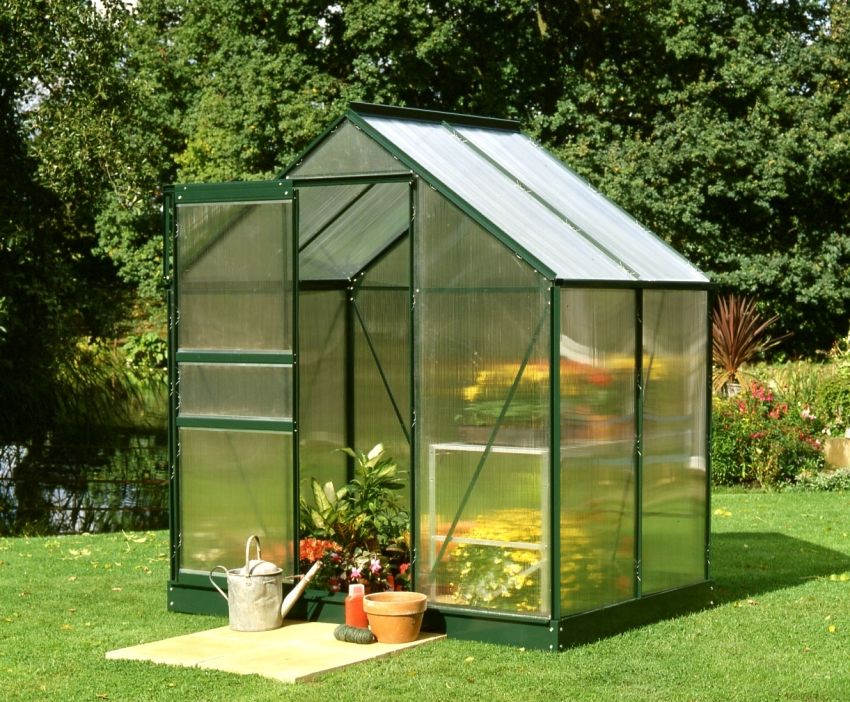
Buying a greenhouse made of polycarbonate opens up great opportunities for the owners of summer cottages in growing vegetables, seedlings and other crops. So it remains only to choose the most suitable and high-quality option, then install a greenhouse on the site and start using.
